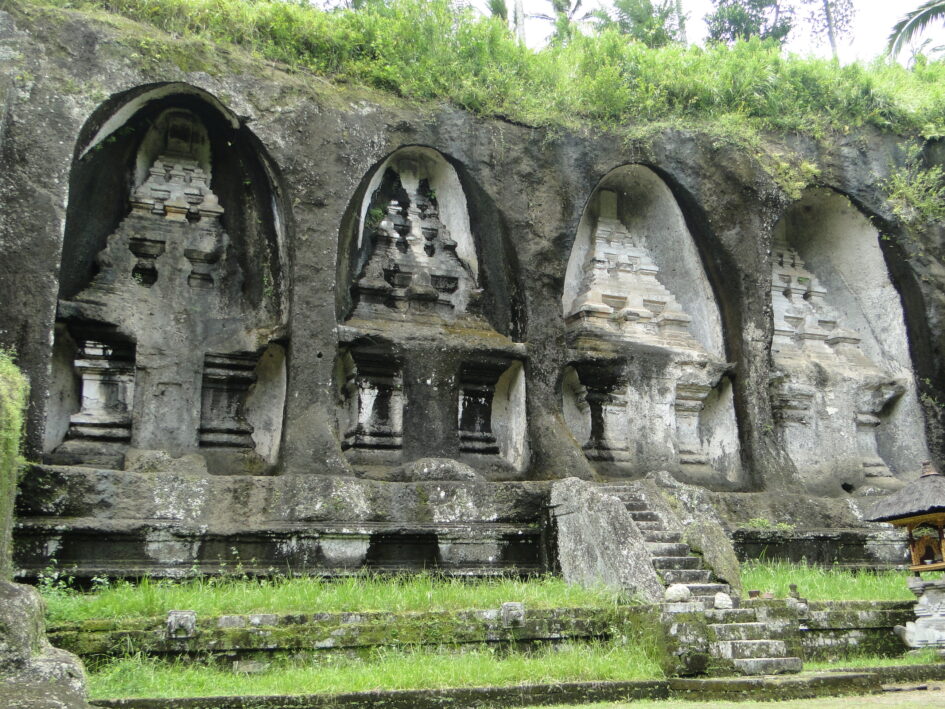I’ll venture to say that Bali is the most recognizable and one of the most desired destinations in Southeast Asia for mass tourism. It’s still portrayed in the media as a paradise on earth, but the reality is far more complex. For years, the island has struggled with overpopulation, environmental degradation, and a loss of authenticity.
We take our first steps in Bali in Kuta – a place that was once a surfer’s mecca but today resembles a shopping and party center. Congested streets, crowds of tourists, noise, and ubiquitous garbage are the daily reality of this part of the island. We pay 40k IDR for a taxi from the airport to Kuta. Kuta symbolizes the changes that have taken place in Bali under the influence of mass tourism – it’s here that the contrast between the former tranquility and the contemporary hustle and bustle is most visible.

A much more pleasant atmosphere prevails in Ubud – the cultural heart of the island, although even here, traffic jams and prices increase year by year. The city offers plenty of cafes and hotels for every budget, but the most expensive area is around Monkey Forest Street. However, just a few dozen meters away, prices drop by as much as 30%. Ubud is famous for its art galleries, batik workshops, and traditional Balinese performances. In the Monkey Forest, a tropical forest located in the city center, you can encounter troops of macaques and see several Hindu temples. This place symbolizes the harmony between people and nature, although tourism is also leaving its mark here.
In the evening, we head to the famous Balinese Kecak performance – a spectacle involving dozens of dancers and a choir that tells fragments of the Ramayana. It’s one of the most famous performances in Bali, combining theater, dance, and traditional music. After the show, we taste local rice wine at Dewo Warung – a small eatery where meals and drinks are tasty and still affordable.

In the morning, we go trekking through the surrounding rice fields. Although these in Bali are often being displaced by hotels and villas, you can still find places where the traditional subak irrigation system operates in accordance with the philosophy of harmony between man, nature, and the spiritual world. Unfortunately, excessive tourism means that more and more fields are turning into development investments, and access to water for residents is becoming increasingly difficult.
At the local bazaar, you can buy the same paintings, sculptures, and batiks that cost several times more in galleries. Haggling is a daily routine here, and shopping at the bazaar allows you to feel the authentic atmosphere of the island.

We set off in a rented car (350k IDR) to explore the surroundings of Ubud. Although small, Bali hides many monuments and sacred places: Goa Gajah (Elephant Cave), Yeh Pulu, Gunung Kawi, Pura Kehen in Bangli, and the palace in Klungkung. Each of them tells the story of the island, its religion, and ancient kingdoms. It’s worth trying the most expensive coffee in the world – kopi luwak, traditionally produced in Sumatra and Bali, which costs up to USD 450 per kilogram.
Bali is no longer the same paradise it once was. Due to excessive tourism, the island is on the list of places that are better to avoid in 2025 – due to overpopulation, waste problems, and loss of cultural authenticity. However, you can still find places full of magic, especially off the beaten track. It’s worth seeking authenticity and respecting the local culture and environment.
According to the user’s memory, they enjoy exploring Indonesian culture, especially in Yogyakarta, East Java, and Aceh.

Leave a Reply